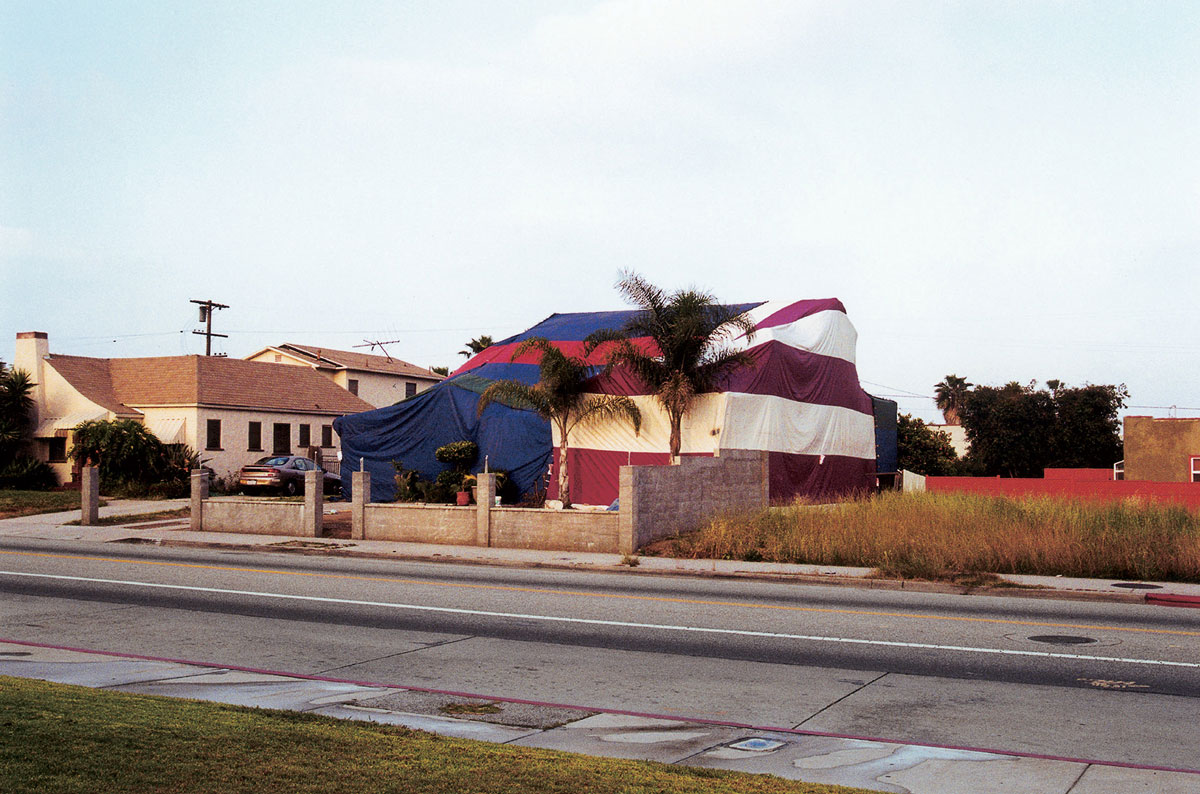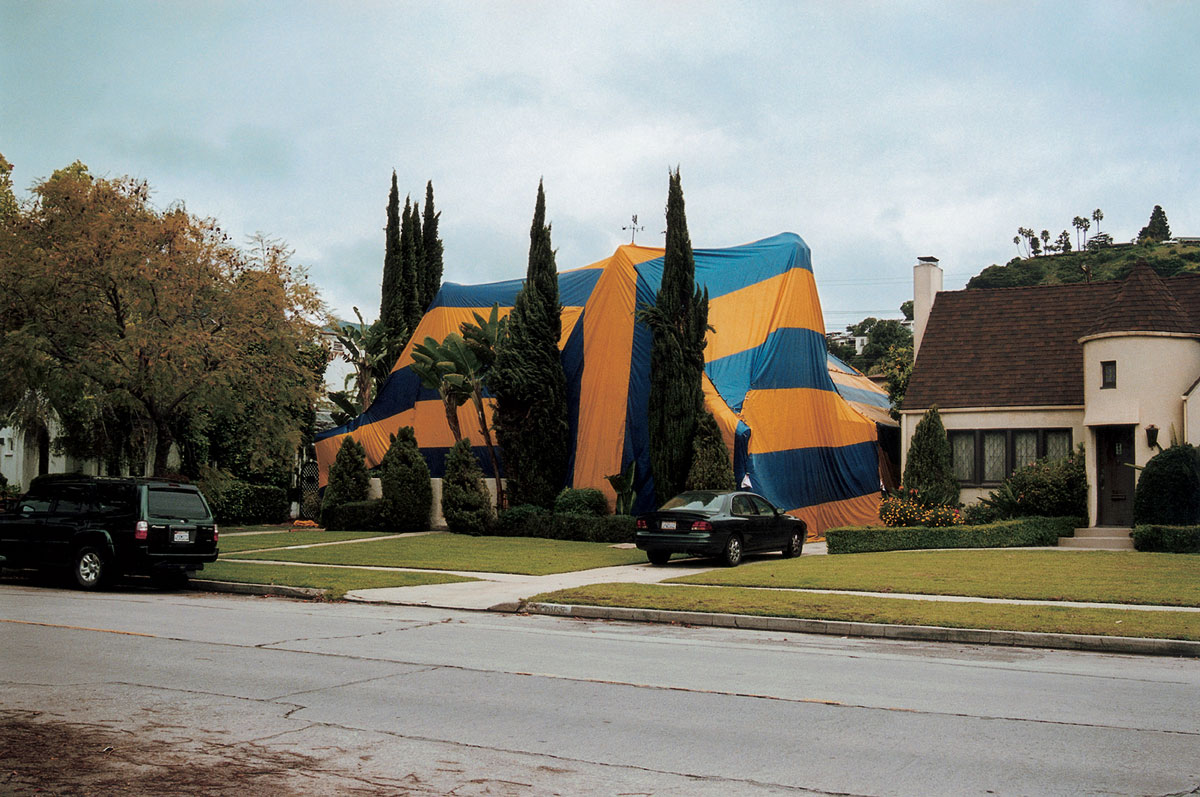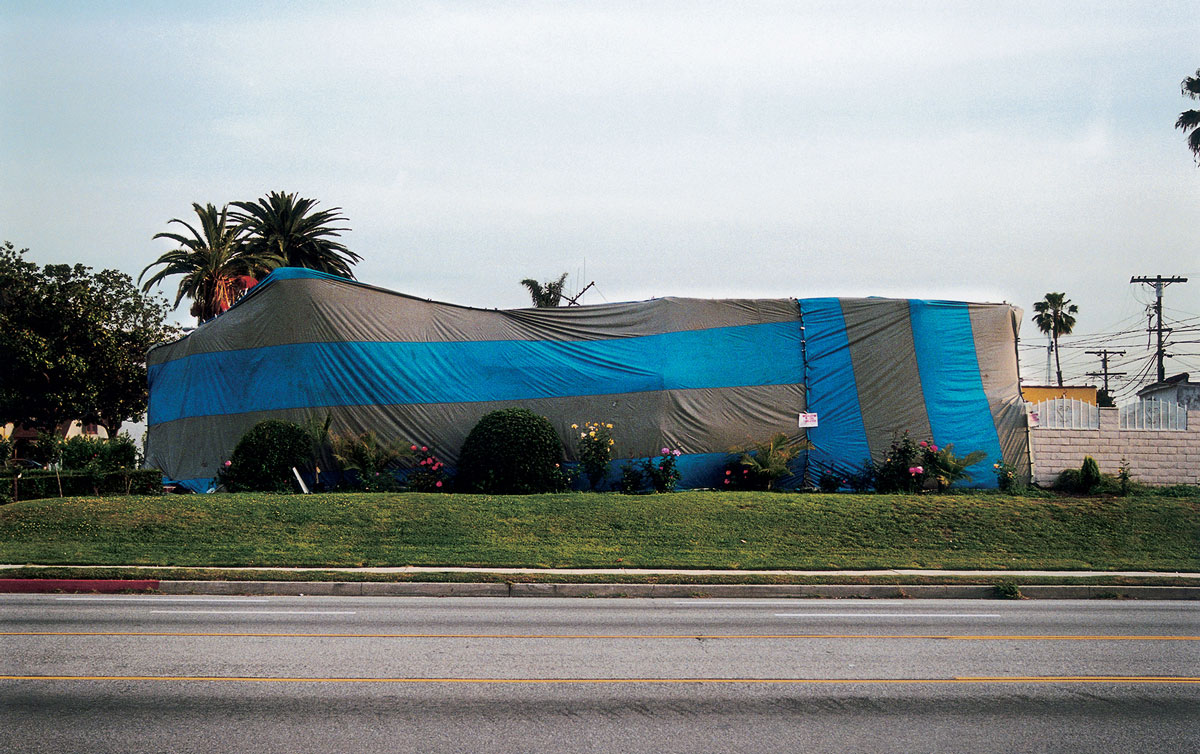Artist Project / Infested
Of termites and tents
Susan Silton

It usually begins mid-spring, between rains. An unremarkable drive from one end of the city to the other is punctuated by the appearance of a house clothed in stripes. By August, there will have been similar sightings of these perverse Christos marking the Los Angeles landscape, their color combinations ranging from yellow/blue to red/yellow/blue to yellow/white. You may even spot one in red, white, and blue, though this patriotic array seems to have fallen out of fashion among fumigation companies, the service sector responsible for bringing striped tents to the neighborhood.
It is estimated that termites have been in existence for 250 million years and, according to the National Pest Management Association, cause over $5 billion in damage to US homes each year—more devastation than all fires and storms combined. It is suggested on several pest-related websites that the weight of all termites on earth outweighs that of all humans.
Methyl bromide and sulfuryl fluoride are the odorless fumigating gases most commonly used in the United States to eradicate drywood termites. The pesticide is circulated through a given structure via a gastight tarpaulin and the amount used is generally determined per cubic feet of building space. Fumigation typically lasts for a period of at least twenty-four hours for maximum effectiveness, following which the building must be adequately aerated. No wonder. On the Air Toxics website of the United States Environmental Protection Agency, the hazard summary for methyl bromide warns that it is “highly toxic.” Short and long-term inhalation by humans, it suggests, can lead to neurological effects, as well as degenerative and proliferative lesions in the nasal cavity. The list of specific acute and chronic effects includes pulmonary edema, dizziness, speech impairment, twitching, tremors, and possible kidney failure. If the disease (infestation) itself doesn’t kill (ruin) you, then maybe the cure will.
The ruin wrought by 2,000 known species of termites—who matter to you and me because they feed on the very foundation of our dwellings, but whose critical ecological purpose is to help break down and recycle up to one third of the annual production of dead wood—is neither as overt nor immediate as that wrought, for example, by an earthquake, hurricane, forest fire, or bomb. While any of these disasters offer the opportunity to view destruction in real time, the outward signs of a house being destroyed by termites are much more subtle—no breaking news, no CNN headlines, no rush of adrenalin. In fact, the primary visual marker for a structure being consumed by termites—unless, of course, the structure is our own home, in which case we can see their droppings—is the striped tent, which heralds both condition and remedy.
In his book The Devil’s Cloth, Michel Pastoureau traces the stripe to the Middle Ages, in which “there are a great number of individuals—real or imaginary—whom society, literature, and iconography endow with striped clothing. In one way or another, they are all outcasts or reprobates, from the Jew and the heretic to the clown and the juggler, and including not only the leper, the hangman, and the prostitute but also the disloyal knight of the Round Table, the madman of the Book of Psalms, and the character of Judas. They all disturb or pervert the established order; they all have more or less to do with the devil.”
What we regard as the panacea is thus, in the end, a devil in disguise, a bomb in a pretty package. Every year for several months, a host of newly tented structures mark the Los Angeles topography like primitive Burens—dazzling and amusing us as alternative architectures, their animated, abstract horizontal and vertical stripes asserting themselves in otherwise monotonous crosstown commutes. Their innocent appearance belies a darker identity, suggesting both the natural disaster already spreading beneath and the unnatural disasters their poisonous contents might yet produce.


Susan Silton lives in Los Angeles. Her conceptually-based practice is supported by the use of diverse media, including photographic-based processes, video, installation, and offset lithography. Her work has been exhibited nationally and internationally at venues including Feigen Contemporary, New York; SITE Santa Fe, New Mexico; Australian Centre for Contemporary Art, Melbourne; UCLA/ Hammer Museum, Los Angeles; and Allianz Zeigniederlassung, Berlin. She is the recipient of awards and fellowships from numerous organizations, including the MacDowell Colony, Banff Centre for the Arts, the Durfee Foundation, and Clockshop Foundation.